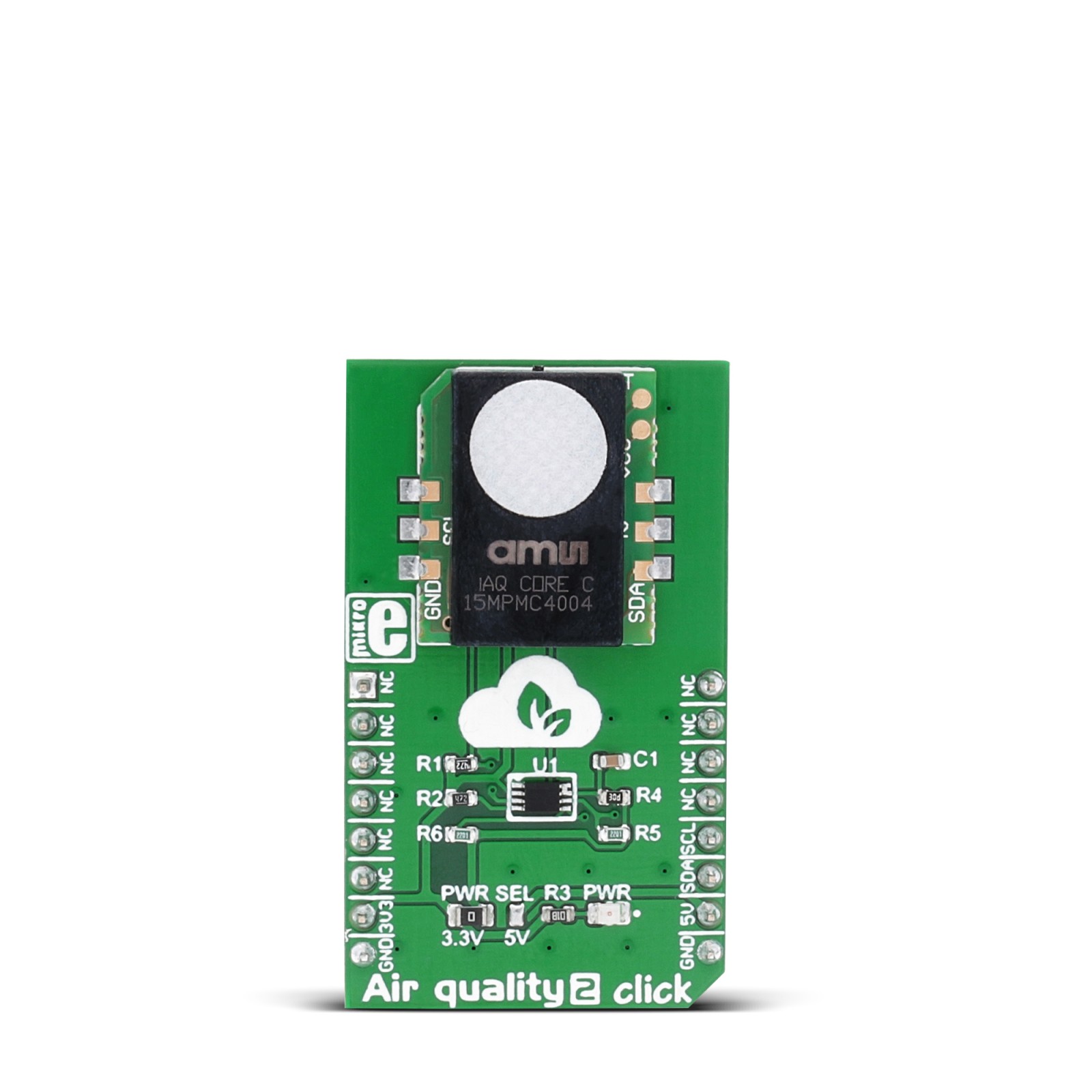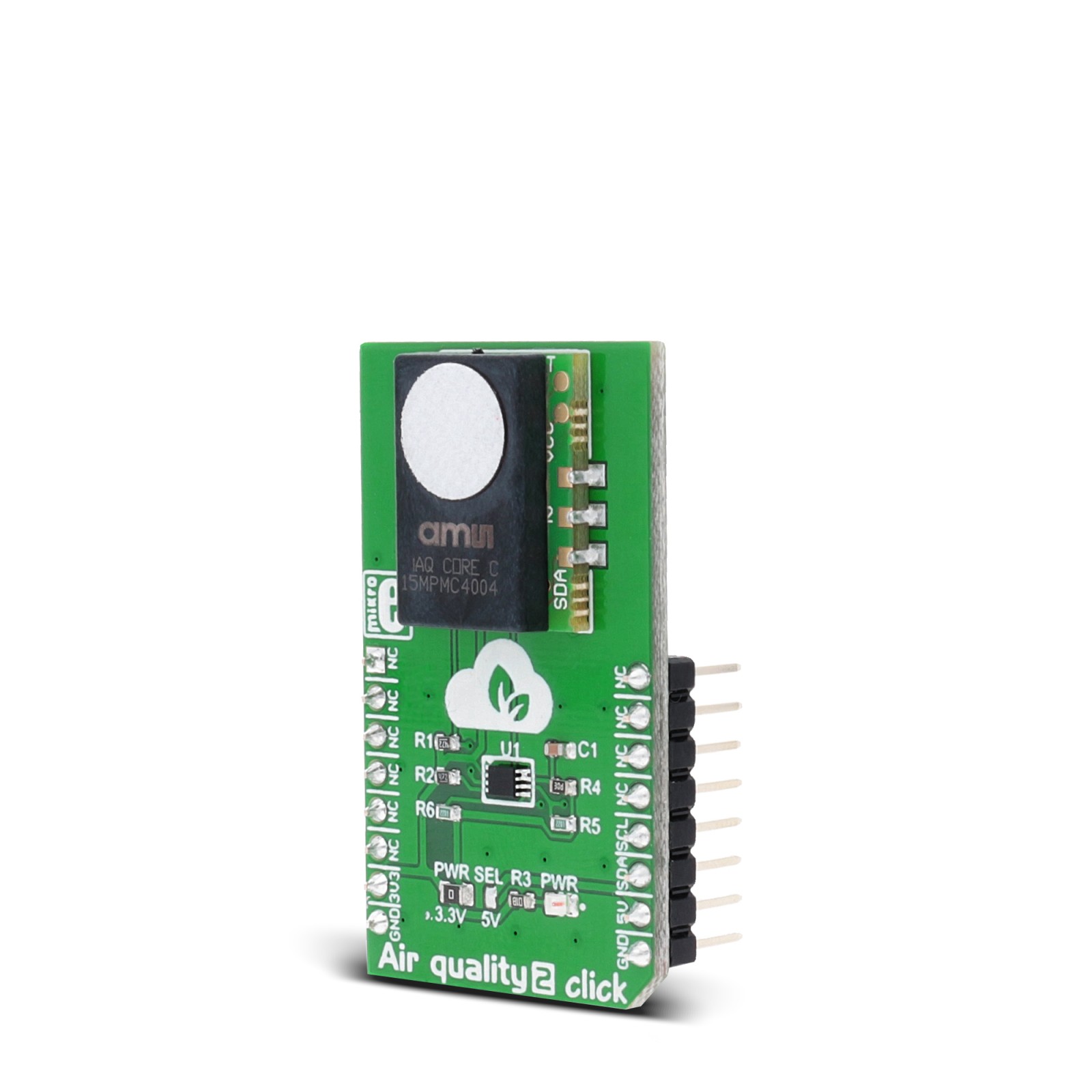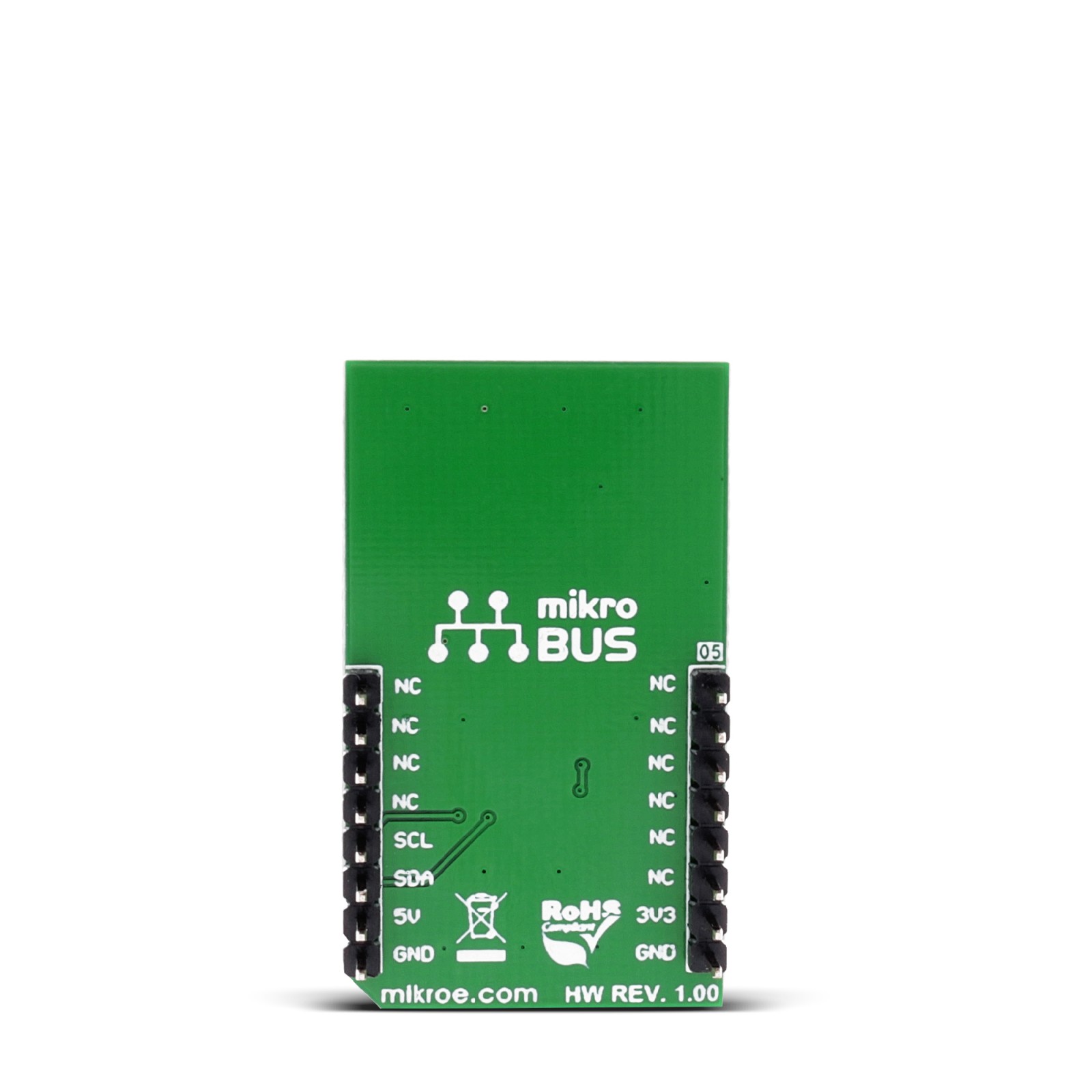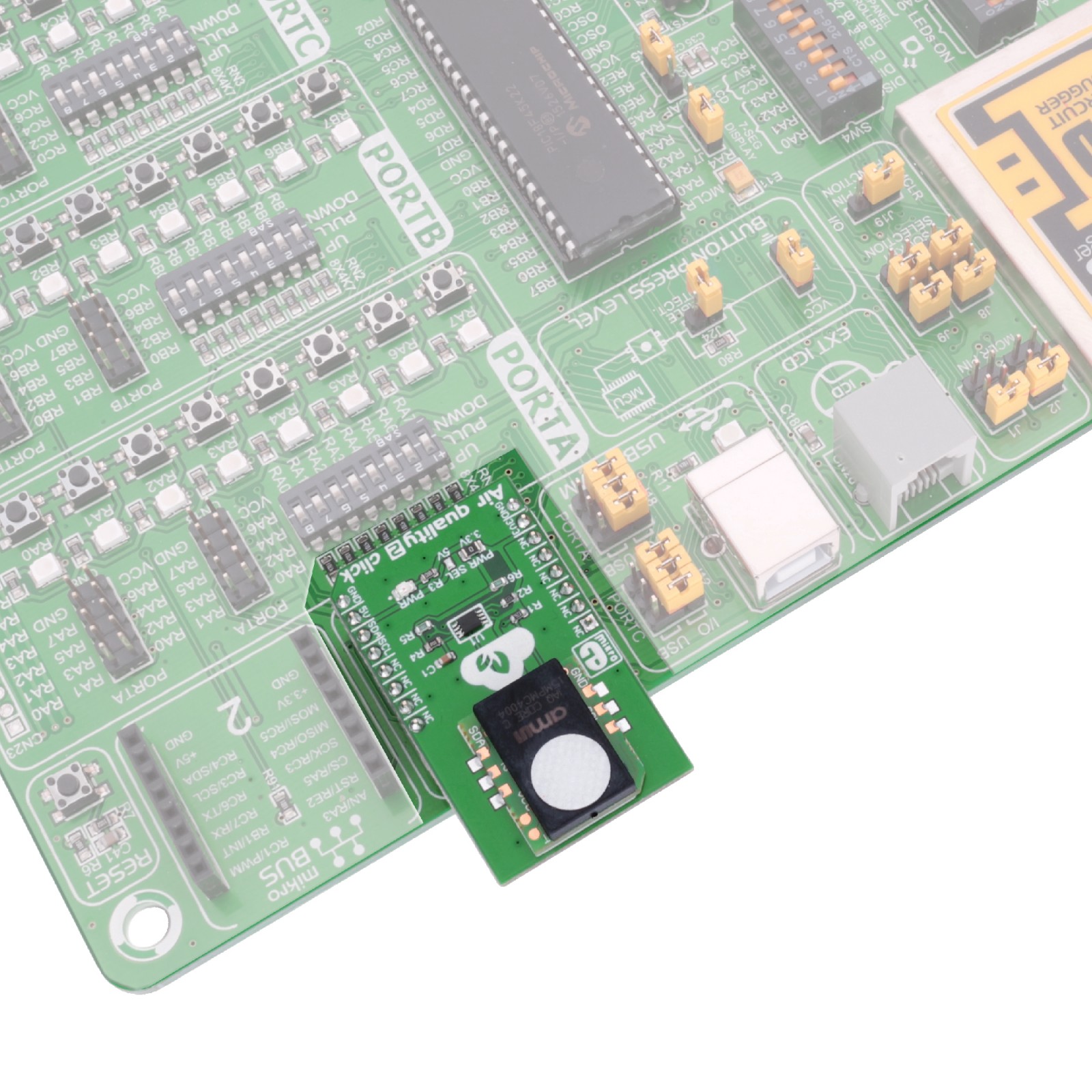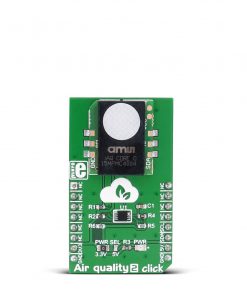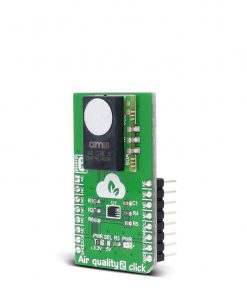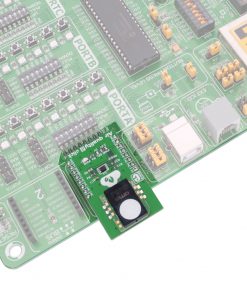Subtotal: R2,700.00
Air quality 2 Click
R905.00 ex. VAT
Air Quality 2 Click is a compact add-on board that measures VOC levels and provides CO2 and TVOC predictions. This board features the iAQ-Core, an indoor air quality sensor module from ScioSense. It has a fast response and high sensitivity in a sensing range of 450 up to 2000 ppm CO2 equivalents and 125 to 600 ppb TVOC equivalents. The iAQ-Core offers a reliable indoor air quality evaluation with a relative output of equivalents. This Click board™ makes the perfect solution for the development of smart home applications, Internet of Things devices, HVAC, thermostats, and more.
Air Quality 2 Click is supported by a mikroSDK compliant library, which includes functions that simplify software development. This Click board™ comes as a fully tested product, ready to be used on a system equipped with the mikroBUS™ socket.
Stock: Lead-time applicable.
| 5+ | R859.75 |
| 10+ | R814.50 |
| 15+ | R769.25 |
| 20+ | R740.29 |

 GSM/GNSS Click
GSM/GNSS Click  3D Motion Click
3D Motion Click 